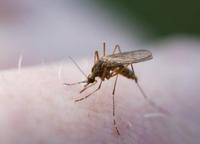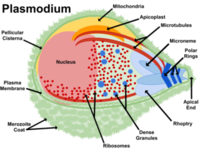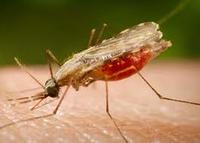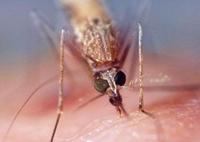-
Baiting mosquitoes with knowledge and proven insecticides

While one team of U.S. Department of Agriculture (USDA) scientists is testing the effectiveness of pesticides against mosquitoes, another group is learning how repellents work; scientists are evaluating insecticides and designing innovative technology to fight biting insects and arthropods
-
-
Scientists: some diseases designated as “emerging” have been around for centuries
The Ebola, Marburg, and Lassa viruses are commonly referred to as emerging diseases, but leading scientists say these life-threatening viruses have been around for centuries; researchers say it would be more appropriate to refer to these viruses as emerging diagnoses
-
-
Global monitoring of infectious diseases in dogs and cats to protect humans
Most emerging infectious diseases of humans come from animals. International health agencies monitor these diseases, but they do so only for humans and livestock, not for companion dogs and cats; a new study recommends a global system is needed to monitor infectious diseases of companion dogs and cats
-
-
New approach to a rapid treatment of malaria

Malaria causes up to three million deaths each year, predominantly afflicting vulnerable people such as children under five and pregnant women, in tropical regions of Africa, Asia, and Latin America; treatments are available for this disease, but the Plasmodium parasite is fast becoming resistant to the most common drugs; researchers have identified a new means to eradicate malaria infections by rapidly killing the blood-borne Plasmodium parasites that cause the disease
-
-
Cellphone data helps target likely spots for malaria control
Mosquitoes that carry malaria have a limited flight range, but that does not stop the disease from traveling long distance; humans infected with the disease can carry it anywhere a car or plane can reach; this makes eliminating the disease challenging, especially when limited resources for health care and mosquito control are available to cover a large geographic region
-
-
New Ebola antibody treatment protects monkeys from lethal disease
A new Ebola virus study resulting from a widespread scientific collaboration has shown promising preliminary results, preventing disease in infected nonhuman primates using monoclonal antibodies; the research team describes a proof-of-concept for using a “cocktail” of monoclonal antibodies, or mAbs, to prevent lethal disease in rhesus macaques; when administered one hour after infection, all animals survived; two-thirds of the animals were protected even when the treatment, known as MB-003, was administered forty-eight hours after infection
-
-
Research on enhanced transmissibility in H5N1 influenza: the debate continues

How can scientists safely conduct avian flu research if the results could potentially threaten, as well as save, millions of lives? Enhancing and analyzing the transmissibility of the H5N1 virus could, on the one hand, provide insights that could help prevent or treat a future outbreak of H5N1, or, on the other hand, it may provide a roadmap for a bad actor deliberately to bring about an influenza pandemic or lead to an inadvertent release of a virus with enhanced transmissibility
-
-
Non-lethal cures: new antibiotic cures disease by disarming pathogens, not killing them
A new type of antibiotic can effectively treat an antibiotic-resistant infection by disarming instead of killing the bacteria that cause it; this is good news, since new drugs are badly needed for treating infections with the bacterium Acinetobacter baumannii, a pathogen that most often strikes hospital patients and immune- compromised individuals through open wounds, breathing tubes, or catheters
-
-
Entomologists discover new species of malaria-transmitting mosquito

Malaria is the leading cause of death in Kenya, where twenty-five million people out of its population of thirty-four million are at risk; researchers have recently discovered a potentially dangerous new malaria-transmitting mosquito; the as-yet-unnamed, and previously unreported, mosquito breeds in the western areas of Kenya and has an unknown DNA match to any of the existing malaria-transmitting species
-
-
Near-instantaneous DNA analysis
Polymerase chain reaction (PCR) is an indispensible technique allowing researchers and clinicians to produce millions of copies from a single piece of DNA or RNA for use in genome sequencing, gene analysis, inheritable disease diagnosis, paternity testing, forensic identification, and the detection of infectious diseases; PCR for point-of-care, emergency-response, or widespread monitoring applications needs to be very fast — on the order of a few minutes; this has now been achieved
-
-
Sustainability of infectious disease surveillance
Just as the globalization of trade and travel is rapidly evolving, so is the globalization of infectious diseases and the need for cooperative approaches to detect, prevent, and control them
-
-
Researchers create mosquitoes incapable of transmitting malaria

More than 40 percent of the world’s population lives in areas where there is a risk of contracting malaria; 300 million to 500 million cases of malaria occur each year, and nearly one million people die of the disease annually — largely infants, young children, and pregnant women, most of them in Africa; scientists breed mosquitoes to be unable to infect people with the malaria parasite, providing genetic options for controlling spread of deadly disease
-
-
Improving malaria control and vaccine development
Each year more than 250 million people worldwide contract malaria, and up to one million people die; malaria is particularly dangerous for children under five and pregnant women; Plasmodium falciparum is the most lethal of the four Plasmodium species, and is responsible for most clinical disease
-
-
A 50-year cholera mystery solved
For fifty years scientists have been unsure how the bacteria that gives humans cholera manages to resist one of our basic innate immune responses; that mystery has now been solved
-
-
Scientists show why swine flu virus develops drug resistance
H1N1-2009 is a new, highly adaptive virus derived from different gene segments of swine, avian, and human influenza; within a few months of its appearance in early 2009, the H1N1-2009 strain caused the first flu pandemic of the twenty-first century
-
- All
- Regional
- Water
- Biometrics
- Borders/Immig
- Business
- Cybersecurity
- Detection
- Disasters
- Government
- Infrastructure
- International
- Public health
- Public Safety
- Communication interoperabillity
- Emergency services
- Emergency medical services
- Fire
- First response
- IEDs
- Law Enforcement
- Law Enforcement Technology
- Military technology
- Nonlethal weapons
- Nuclear weapons
- Personal protection equipment
- Police
- Notification /alert systems
- Situational awareness
- Weapons systems
- Sci-Tech
- Sector Reports
- Surveillance
- Transportation
Advertising & Marketing: advertise@newswirepubs.com
Editorial: editor@newswirepubs.com
General: info@newswirepubs.com
2010-2011 © News Wire Publications, LLC News Wire Publications, LLC
220 Old Country Road | Suite 200 | Mineola | New York | 11501
Permissions and Policies
Editorial: editor@newswirepubs.com
General: info@newswirepubs.com
2010-2011 © News Wire Publications, LLC News Wire Publications, LLC
220 Old Country Road | Suite 200 | Mineola | New York | 11501
Permissions and Policies
